AN6. Towards a Sustainable World

Chapter 6
This final chapter asks you to apply the concept of a sustainable world to the ecosystems that you have been studying—aquatic ecosystems in a bottle, old growth forests of the Pacific Northwest, and tropical rainforests. You will be asked to think about the major themes of global systems science, and how they relate to your life.
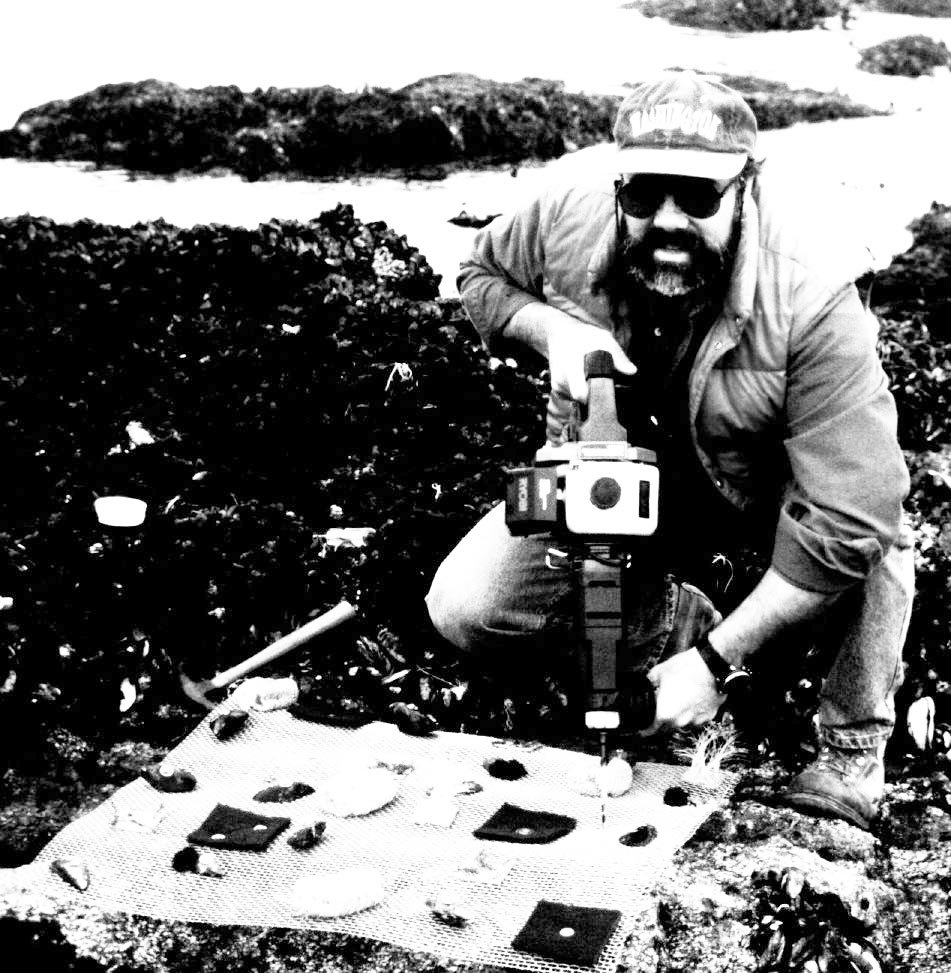
(Photo courtesy of Tom Suchanek)
Meet Tom Suchanek. He is the director of the Western Region of the National Institute for Global Environmental Change. His specialty is aquatic ecosystems. In this picture, he is working in the rocky intertidal zone—which is the seashore that is exposed between low tide and high tide.
This area is very rich in marine life. On a square meter of exposed mussel beds, as many as 300 different species of marine life can be found. This area is also vulnerable to damage by natural disasters and human activities—from people walking over the rocks to such devastating events as oil spills or long-term climate change.
Dr. Suchanek is investigating the conditions that encourage plants and animals to recolonize a coastal area after it has been swept clean of life. One of the methods he uses is shown in the picture. It is a stainless steel wire mesh with various objects attached to its surface. He will leave it in place for several months, inspecting it from time to time to find out what larvae have attached themselves to the various objects, recording his observations in a log book. Through many such experiments he will probably formulate and reject many different hypotheses, in an effort to determine what it will take to sustain marine life in the rocky intertidal zone.
As you’ll discover, there are some similarities and differences between Dr. Suchanek’s experiment and your own aquatic ecosystem.

AN6.1. Investigation:
Analyze Your Own Ecosystem
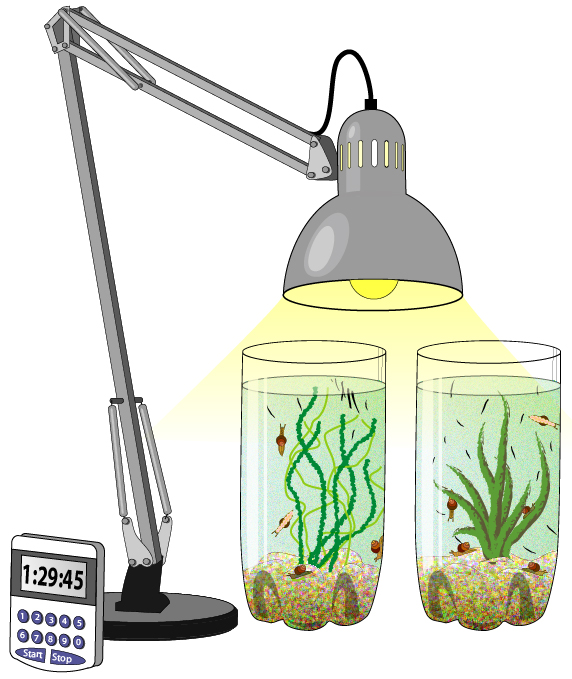
Check back in with your experiment from chapter 1.
Here are the kinds of questions Dr. Suchanek might ask himself when writing a report of one of his experiments. Review your log and use these questions as a guide to create a report of your aquatic experiment.
- What was my original hypothesis? Even if you find that your original idea for how the experiment would come out was incorrect, it is useful and important to write down what you expected. That explains why you did what you did, and makes a coherent story for your readers to follow. It also allows others to build on your work rather than simply repeat it.
- What did I do? In any report it is important to tell the reader as much as possible about what you did and why you did it. What plants and animals did you select? How did you prepare the two containers? What did you keep the same? What did you decide to make different in the two containers?
- What’s the system? Make a sketch of your two ecosystems, labeling the various elements of the systems, with lines showing how you believe they interact. List any key ideas about ecosystems you think are illustrated by your experiment.
- What did I find out? Summarize the results of your log. Describe how the two ecosystems developed in the first two or three days, then after you made a single change. What specific things did you observe, measure, or count? How did both ecosystems change from the time the experiment began to the time it ended? Any graphs that you can make to show changes in the number or weights of the organisms will make it easier for someone else to understand what you found out.
- What are my conclusions? First, consider your original hypothesis. Did you find out if your first guess was right or wrong? Did you learn anything else about how the environment affected the health of the plants and animals? How do the organisms interact with each other? Keep in mind that no experiment is ever a failure. Something is learned even if the result is not what you expected. What did you learn from this experiment?
- Do you have any recommendations? What additional questions occurred to you during your investigation? Which of these would you like to investigate if you have the time to do so? What would you recommend to someone who wanted to maintain an aquatic ecosystem for as long as possible?
I. Carol’s Grand Cooperative Car Program
An Essay on cooperation to provoke your thinking about the long-range effects of your decisions. By Richard Golden.
When I was in college I had a friend who many of us thought would either wind up as the first woman president or the head of a large corporation. She had the kind of mind which was forever organizing big projects, and she had the energy to follow through on them. Her name was Carol Mathews. I don’t know were Carol is now. We lost touch. I often wonder what happened to her. But let me tell you about Carol’s grand cooperative car program.
Our small college was some distance from town. Without a car, social life was limited.
Carol came up with the following scheme. If six people would each contribute $500 and pool the money, a pretty good secondhand car could be bought.
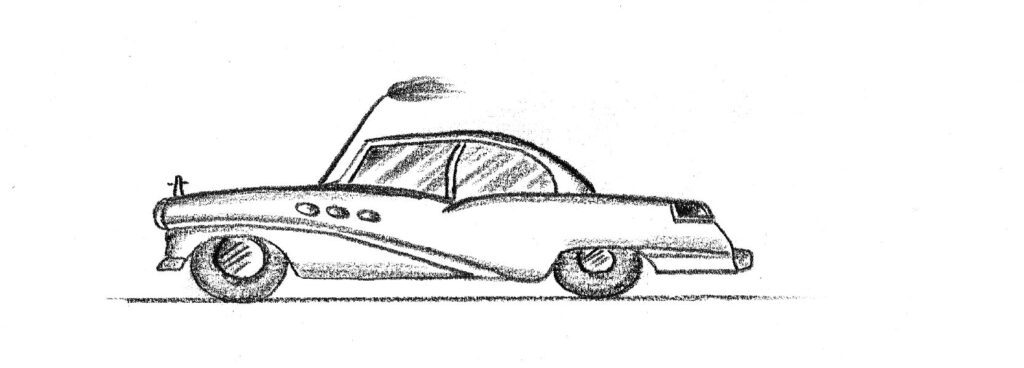
She convinced five friends to join her in the project. She had it all figured out. If they each contributed $5 a week it would take care of the insurance and license.
Carol’s idea was that they would use the car in rotation, day by day. The lineup would be in alphabetical order. Starting on a Monday, Annalee would get the car first. Carol would pick up the car from Annalee and use it on Tuesday. Debra would be next, and then the others. Since there were six partners Annalee would get the car again on the following Sunday. Carol would have it on Monday and so everyone would have the use of it on different days of the week.
It was a great scheme. As Carol pointed out, in any six-week period, each co-owner would have the car once on a Friday, once on a Saturday and once on a Sunday as well as on four of the weekdays. Everyone agreed to the plan.
At first everything went fine. They shopped for a car that would cost no more than the money they had. They looked them over and then made the decision by putting the names of favorite cars on slips of paper and pulling out the choice. When Carol recalled those early days her eyes lit up. It was a great thrill to be riding in a car of their own, even if they owned only a part of it.
It was part of the deal that when they turned the car over to the next partner they had to give it with a full tank of gas. That way each person paid for the gas they used. Carol had thought of the cost of repairs too. Everyone agreed to be responsible for one sixth of maintenance.
The trouble began over a bag of popcorn. Carol complained that popcorn was all over the back seat when she got the car from Annalee. Annalee said she didn’t have anybody in the back seat while she had the car. She said it must have been someone else’s fault. A few days later Carol saw a dent in the rear fender. Nobody said anything about an accident.
Then there was the problem of mud. Debra and her boy friend liked to go fishing. They traveled on the back roads to get to the streams; and after she used it, the car was covered with mud. Kimi objected that every week when she had her turn she would have to wash the car. She said that she was tired of washing the car for the whole group. Debra refused to wash the car because she said then she would be washing the car for the group. Everyone knew it was stupid but nobody wanted to clean or polish the car when she knew that she would only have it for part of the time. In short, the car became a mess.
They had the car for a couple of months and there were increasing hard feelings and arguments. Then when Analee was driving she accidentally drove over a curb and one of the tires blew out.
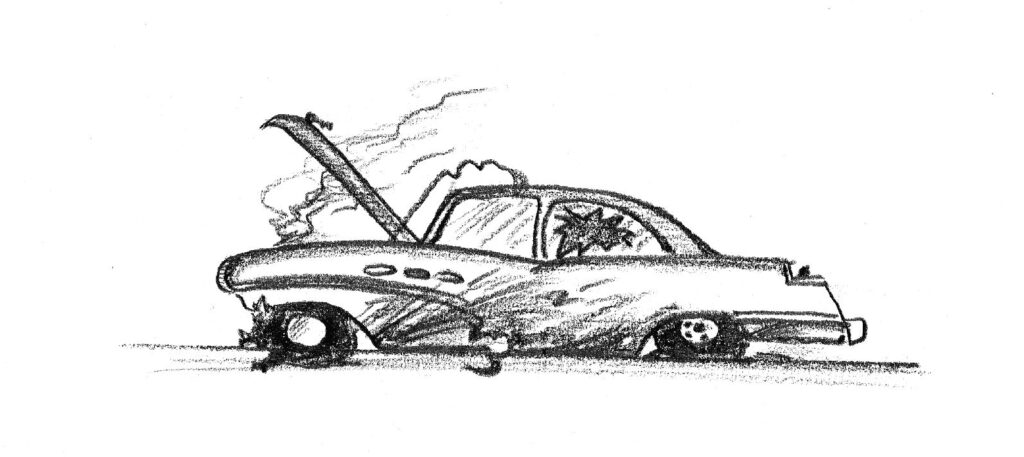
They had an argument over the repairs. The others said that Analee should replace the tire. She said that the tire was old and that it probably needed to be replaced anyhow. The spare was no good and so the car was laid up for a week until Analee finally gave in. But later, when the drive shaft broke, Analee refused pay for her part of the repair, and no one else wanted to pay either. They all knew that Debra and her boy friend drove the car on the back roads where only four wheelers should go. They felt she was really responsible even if the breakdown happened when Annalee had the car.
Carol and her friends stopped talking to each other and the car remained unused at the repair shop. Eventually it was sold by the shop. After deducting for storage charges, each person got $50 back.
In an essay by a biologist named Garrett Hardin, “The Tragedy of the Commons,” he speaks of the days when England was a land of small farms and villages. Each village had its commons— a piece of land which was the community property of all the villagers.
In England, farmers used the commons as pasture land for cattle. For a long time the number of farmers remained low, and there was no problem sharing the common pasture. Then, around the 1600s, the population began to rise, and each farmer increased the size of their herd. The grass was eaten before new grass could grow back. The commons was ruined and cattle died. By putting their own individual interests ahead of every other farmer, the English farmers ruined the resource that was needed for everybody.
The car was a kind of commons for Carol and her friends. It made me think of a statement by the Greek philosopher Aristotle: “What is owned by all is cared for by no one.”
The same is true of forests throughout the world. While the loss of forested land in industrialized countries like the United States, Canada, and Europe has slowed, deforestation has increased dramatically in several developing nations. In Brazil, for example, farmers burn large areas of land covered by tropical rain forests to raise cattle. Other areas are logged for valuable woods such as mahogany. Worldwide, if the area of forests that are cut or cleared in a single year were put together, the loss of forested lands would be equivalent to the entire state of Illinois. The rate at which forests are lost is likely to increase as the human population continues to grow.
In 1992, representatives from more than 100 countries met in Rio de Janeiro, Brazil, to discuss what governments can do to reduce the impact of human activities on the environment. At the meeting, called the Earth Summit, the United States and Canada proposed rules for the sustainable use of forested lands throughout the world. However, developing nations refused to adopt them. Diplomats from Brazil pointed out that when the United States was young, it gained wealth by cutting its forests. They argued that developing nations should be permitted to do the same thing, so that their people can have the same standard of living as people in the United States. In 2012, a study whose results were published in Nature magazine indicated the danger of the world reaching a “tipping point” in which ecological changes might happen (see excerpt in box a right).
How would you solve the problem of the commons?
- What do you think Carol and her friends might have done to solve their problems and realize their dream?
- What does the story (and your answer to the last question) suggest about the English farmers? How could they have solved their problems so that they could continue to sustain their cattle on common lands for decades? What actions could they have taken? What might they have had to give up?
- Now apply your insights to the use of forests throughout the world. Think of our entire planet with all its vast resources as a commons. In comparison with Carol and her friends, what stage has the world’s human population reached with regard to using the Earth’s forest resources?
- What actions do you think world citizens should take in the decades to come so that our planet can sustain a healthy habitat far into the future?
Article from UC Berkeley News Center:
2012 June 6. Scientists uncover evidence of impending tipping point for Earth. By Robert Sanders, Media Relations.
Excerpt: A prestigious group of scientists from around the world is warning that population growth, widespread destruction of natural ecosystems, and climate change [topics of the Global Systems Science books Population Growth, Ecosystem Change, Losing Biodiversity, and Climate Change] may be driving Earth toward an irreversible change in the biosphere, a planet-wide tipping point that would have destructive consequences absent adequate preparation and mitigation.
“It really will be a new world, biologically, at that point,” warns Anthony Barnosky, professor of integrative biology at the University of California, Berkeley, and lead author of a review paper appearing in the June 7 issue of the journal Nature. “The data suggests that there will be a reduction in biodiversity and severe impacts on much of what we depend on to sustain our quality of life, including, for example, fisheries, agriculture, forest products and clean water. This could happen within just a few generations.” The Nature paper, in which the scientists compare the biological impact of past incidences of global change with processes under way today and assess evidence for what the future holds, appears in an issue devoted to the environment in advance of the June 20-22 United Nations Rio+20 Earth Summit in Rio de Janeiro, Brazil. The result of such a major shift in the biosphere would be mixed, Barnosky noted, with some plant and animal species disappearing, new mixes of remaining species, and major disruptions in terms of which agricultural crops can grow where.
…How close is a global tipping point? The authors of the Nature review – biologists, ecologists, complex-systems theoreticians, geologists and paleontologists from the United States, Canada, South America and Europe – argue that, although many warning signs are emerging, no one knows how close Earth is to a global tipping point, or if it is inevitable. The scientists urge focused research to identify early warning signs of a global transition and an acceleration of efforts to address the root causes.
…“We really do have to be thinking about these global scale tipping points, because even the parts of Earth we are not messing with directly could be prone to some very major changes,” Barnosky said. “And the root cause, ultimately, is human population growth and how many resources each one of us uses.” …The authors note that studies of small-scale ecosystems show that once 50-90 percent of an area has been altered, the entire ecosystem tips irreversibly into a state far different from the original, in terms of the mix of plant and animal species and their interactions. This situation typically is accompanied by species extinctions and a loss of biodiversity….
Currently, to support a population of 7 billion people, about 43 percent of Earth’s land surface has been converted to agricultural or urban use, with roads cutting through much of the remainder. The population is expected to rise to 9 billion by 2045; at that rate, current trends suggest that half Earth’s land surface will be disturbed by 2025. To Barnosky, this is disturbingly close to a global tipping point.
“Can it really happen? Looking into the past tells us unequivocally that, yes, it can really happen. It has happened. The last glacial/interglacial transition 11,700 years ago was an example of that,” he said, noting that animal diversity still has not recovered from extinctions during that time. “I think that if we want to avoid the most unpleasant surprises, we want to stay away from that 50 percent mark.”
…“My view is that humanity is at a crossroads now, where we have to make an active choice,” Barnosky said. “One choice is to acknowledge these issues and potential consequences and try to guide the future (in a way we want to). The other choice is just to throw up our hands and say, ‘Let’s just go on as usual and see what happens.’ My guess is, if we take that latter choice, yes, humanity is going to survive, but we are going to see some effects that will seriously degrade the quality of life for our children and grandchildren.”
For full story: http://news.berkeley.edu/2012/06/06/s…
Video by Roxanne Makasdjian, UC Berkeley Media Relations

AN6.2. Investigation:
In Your Opinion—An Environmental Essay
What is freedom? Some philosophers say freedom is the ability to make choices and to act upon them. As citizens in a free society, and as educated individuals, each of us makes a multitude of choices. While it’s true that prejudice and poverty can keep some citizens from exercising choices that are available to others, everyone makes certain decisions that affect the global environment. Our use of energy is one example. The purchases we make is another. Even the way we dispose of our trash affects the global environment.
Our choices reflect our knowledge, attitudes, and opinions. In a sense, they are a window through which we can see how we really stand on environmental issues. A good way to take stock of your personal opinions concerning choice and the global environment is to write an essay about how your personal actions relate to an issue of environmental concern.
Write a thoughtful, well-organized essay about your insights.
1. Look over newspapers and magazines for the past month or so, and find an article about an environmental issue that interests you. Read the article and jot down thoughts that occur to you.
- What news is being reported, and why is it important?
- Are there any controversies among scientists, political leaders, or others concerning this news? If so, what are they?
- Which groups of people would it affect? Which animals, plants, or ecosystems would be affected?
- What system is involved?
- How might this news impact your life, or the lives of your children or grandchildren?
- Think about your personal opinion concerning the news article. If an action is being debated, decide which side you would like to prevail.
- Now think about how the issue relates to everyday choices. How do your actions relate—even in a small way—to the issues in the article? Are your personal actions in agreement, or in conflict with your stated opinions?
2. Discuss your thoughts and insights with a friend or family member. Ask for their input on how the issue relates to personal choices.
II. A New World View
The title of this book has more than one meaning. It refers to the new vantage point that space travel has given us, of our Earth as an island of life in the cold blackness of space.
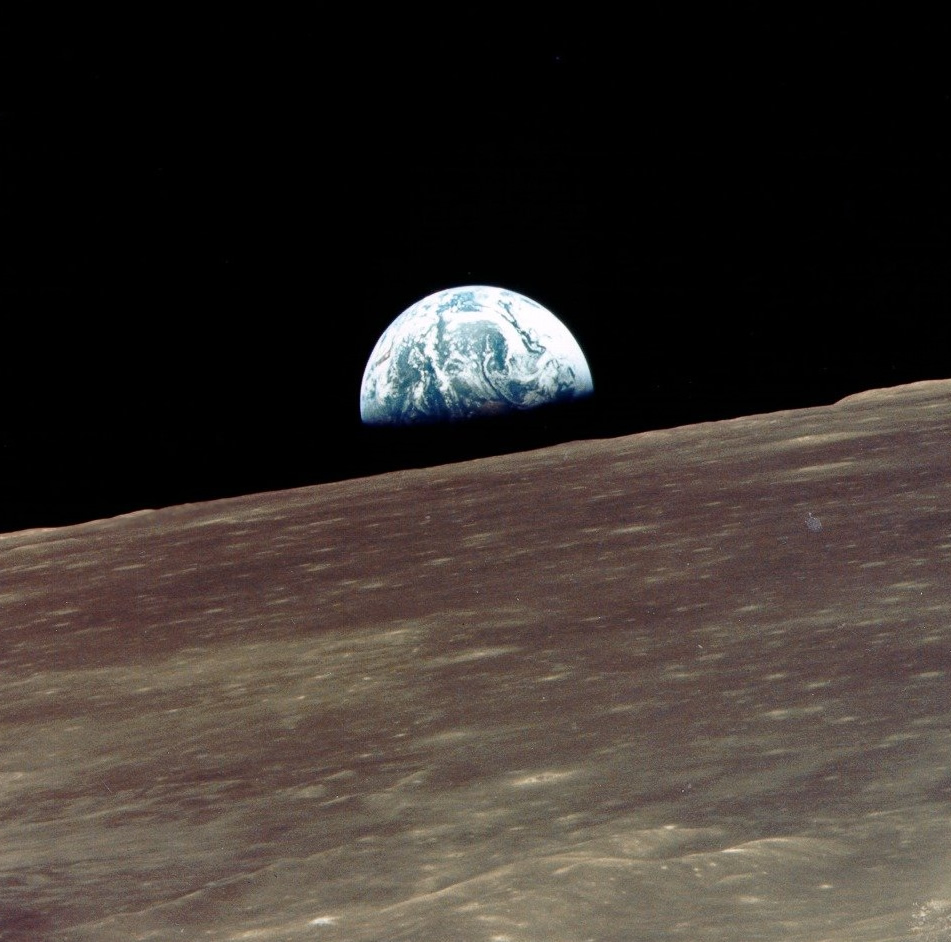
It refers to our growing understanding of how the air, oceans, land, and living things interact to keep the Earth from growing too hot or too cold to support life.
It also refers to the recognition that everything is connected to everything else—that a rise in the temperature of the Pacific Ocean, for example, can cause storms and floods on the other side of the world.
Important, also, is our understanding of how the Earth has changed through time, and the possibility of predicting how we may be changing its future.
Whether or not you someday choose to become a scientist, you can find value in understanding this new world view. As citizens of the United States, we use more energy and resources per person than do people in any other country in the world. Our impact per person is therefore the highest. It stands to reason that as individuals we can make a greater contribution than individuals in other countries towards reducing the human impact on Earth’s global system. We can lead the way to a sustainable world. The choice is ours. What will you do?
Resources
- Eyes on Earth – http://climate.nasa.gov/Eyes/ – data from Earth-observing satellites. “Image of the Day” and “Current News” often have up-to-date satellite views of happenings on Earth: fires, volcanic eruptions, dramatic ecosystem changes, etc. “Stories about Planet Earth” also has well crafted material relevant to GSS topics.
- InciWeb – incident information management system (mostly forest fires) – http://www.inciweb.org/

